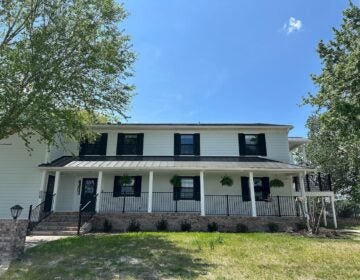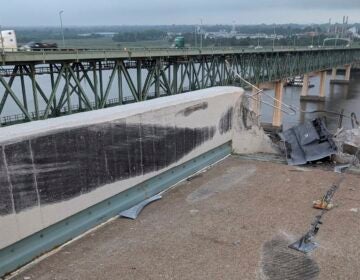Solution found for Delaware Bay flooding [video]
Just a few miles north of the crowds that flock to Delaware’s Atlantic shore, the beaches on the Delaware Bay in northern Sussex and Kent counties offer a slower-paced experience. And while the coastal communities on the bay face the same threat of rising sea levels as the ocean beaches, many of the bay beaches are facing another more immediate threat.
It all started on Mother’s Day 2008. A strong nor’easter pummeled the Delaware coast, flooding roads and damaging homes. But the biggest effect was the breach of the dune line at Fowler Beach on the eastern edge of Prime Hook National Wildlife Refuge.
The breach in dunes eventually stretched to 300 feet before Hurricane Sandy brushed by the state in October. After Sandy passed, the National Fish and Wildlife Service (NFWS) found the dune breach expanded to 1,500. All that has caused an influx of water into the marsh, threatening the ecosystem and worsening flooding for a number of bay shore communities.
Flooding fears
“It definitely impacts us from the marsh side,” said Jim Bailey, who lives in Broadkill Beach. “The breaches themselves allow such an influx of water from the bay that, whenever we get an additional influx from a storm tide or whatever, there’s no place for the water to go.”
He’s owned his home on the border of the refuge for more than 30 years. As president of the Broadkill Beach Preservation Association, he’s been fighting to get the breaches fixed for years. “To allow a detrimental impact on the people that live here and their surrounding environments, and that live and work in those surrounding environments, that’s just not an acceptable issue,” Bailey said.
State Sen. Gary Simpson represents a number of the bay communities impacted by flooding at Prime Hook. Simpson has also been fighting for years to get the dune breaches repaired.
“Can you imagine waking up on a normal high-tide day, and your road coming into your house or your whole community is flooded?” Simpson said. “You don’t know whether your kids are going to be able to get back on the school bus.”
“It’s not just the Prime Hook residents, but this is a whole system starting from Slaughter Beach coming down to Prime Hook and then down to Broadkill,” he continued. “It’s a whole flooding system, so if you flood one area, you’re going to flood another.”
Simpson says the flooding has had a devastating impact on wildlife habitat. “What we’ve seen with this flooding is not only the loss of the freshwater marsh, which had thousands of birds into it every winter, but we’re seeing a whole vast area of trees that have been surrounding that marsh completely dead now.”
A fix for dunes, a mosquito problem in the marshes
Perhaps one of the only good things to come out of Superstorm Sandy is federal funding that should finally fix the breach. NFWS will use $20 million in Sandy relief money to rebuild the dunes.
Earlier this year, NFWS finalized the Comprehensive Conservation Plan to restore the marshes, something that has also been long awaited by Prime Hook’s neighbors.
One item that’s still being debated in the management plan for the refuge is how best to control mosquitoes that use the muddy banks of the marsh to reproduce. The current plan would limit the state’s ability to use adulticide to kill mosquitoes in the marsh after this summer.
That plan doesn’t sit well with Bill Meredith of Delaware’s Mosquito Control Section. “The service, I think, would have to have a better understanding of what the consequences would be,” Meredith said.
Residents like Jim Bailey are equally concerned about a booming mosquito population if adulticide use is restricted. He says on a blustery day with a sea breeze, the bugs aren’t too bad, “but if the wind is calmer [or] the wind is coming off the marsh? Oh my, it can be quite grim.”
He says the spraying has been very effective. “I wouldn’t like to see that subside or go by the wayside.”
If left unchecked, the mosquito population on the coast could head further inland and cause problems for higher-density populations like Milford and beyond. “It’s a suite of salt marsh mosquitoes that are problematic,” said Meredith. “They’re disease transmitters. They have long flight ranges; they can fly five to 15 miles inland from the marshes … and that blankets a lot of Delaware with mosquito problems.”
Bay Shore Initiative
The fixes for Prime Hook come just as the state is looking to more broadly promote the bay shore. Last year, then-U.S. Interior Secretary Ken Salazar toured the area as the state unveiled several projects to draw more visitors to this somewhat hidden treasure along Delaware’s coast.
“We tongue-in-cheek say that this is the point in the world in which the universe revolves, but we don’t want the world to know,” says Bailey. “It’s really very quiet. A congregation of a lot of fine people.”
WHYY is your source for fact-based, in-depth journalism and information. As a nonprofit organization, we rely on financial support from readers like you. Please give today.




